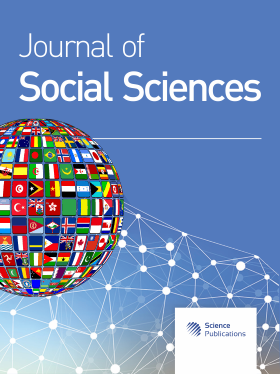The Social Adjustment of the Kuy People to a Multicultural Context in Southern Isan, Thailand
Abstract
The state had paid much attention on economy by building a network of roads between the province, the district and the village for the Kuy people in Ban Treum. The state established a health center to provide for the people with modern medical care and malaria prevention. And the external streams had more effects on their communities. Therefore, Kuy had to adjust themselves The purposes of the study were to study the social adjustment in multicultural context before world war II (Before 1945) and to study the social adjustment in multicultural context after world war II (1945-1976). The area of the study was Ban Truem, Si Khoraphum district, Surin province. The data were elicited through a document analysis and interviews as well as participatory and non-participatory observation of 30 key informants, comprising aged people, officially-appointed community leaders, ritual performers and officials from government and private sectors. The data were analyzed with the use of qualitative analysis method, the results being presented by means of descriptive analysis as follows. First period they created freedom ways of life, highly believed in custom, tradition and ancestor worship since an ancient period to after World War II (1945). The Kuy people in Ban Treum had a strong belief in ancestral spirit was still found in all Kuy villagers. Before the end of World War II (before 1945). Kuy adjusted themselves freely according to their traditional mores and rituals regarding ancestral spirits. Their settlement patterns fitted well with environmental conditions. In general, their social practices were based on mores. Kuy earned a living by farming for home-consumption, weaving, raising animals and fishing. They tried to be familiar with the surrounding systems, began commercial rice farming and sold paddy to merchants along the railway. In second period (1945-1976) they built and adjusted their relation with Thai-Cambodians ethnic and Thai-Isan by married, farmed, accepted and believed in Buddhism along with ancestor soul and the government aimed at modernization, so capitalism had become more influential on socio-economic conditions. Internal capitals were accumulated from different kinds of businesses and inheritance, while most foreign capitals gained much support from various state policies and measures. By the time the 8th and 9th National Development Plans were applied, capitalism had already established firmly in Thai economy. However, the Kuy people had a strong belief in Phi Takuat", the symbol of fertility. They performed annually in the 6th month before planting rice. A tail of monitor lizard, a symbol of fertility, was used to tell the fortune. This ritual was practiced in parallel with capitalism, reflecting the fight for ecological conservation and sending the message that natural resources should be of major concern in any way of life.
DOI: https://doi.org/10.3844/jssp.2008.343.346

- 4,413 Views
- 3,421 Downloads
- 0 Citations
Download
Keywords
- The adjustment
- the social adjustment
- the Kuy
- multicutural context
- Southern Isan
- Thailand
